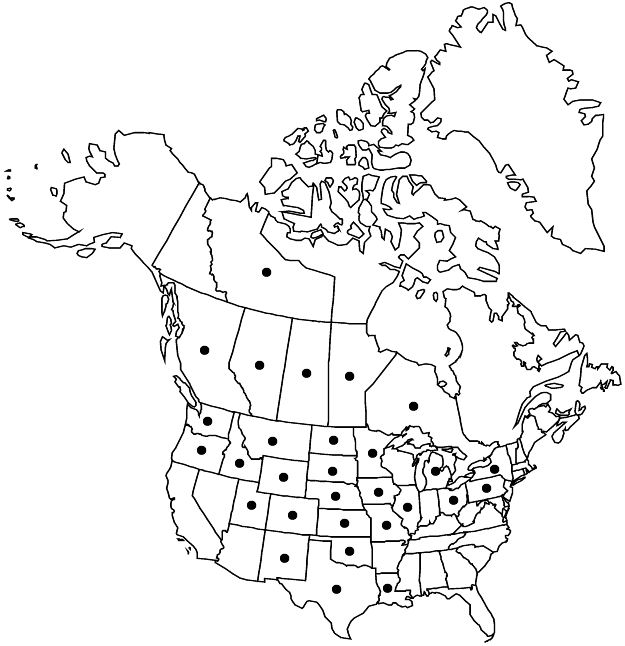Potentilla supina subsp. paradoxa
Folia Geobot. Phytotax. 4: 207. 1969.
Stems prostrate to ascending, sometimes erect, (1–)2–4(–6) dm, hairs at base not particularly stiff, not tubercle-based, glands absent or sparse, inconspicuous. Leaves pinnate (with distal leaflets ± confluent), 5–12(–15) cm; petiole 1–6(–8) cm, long hairs sparse to common, ± ascending, sometimes erect or appressed, 0.5–1(–1.5) mm, usually ± weak, crisped hairs absent or sparse to common, glands sparse to common, inconspicuous; leaflets 5–9, on distal (1/4–)1/2–2/3 of leaf axis, ± separate, largest ones oblanceolate to elliptic or obovate, 1–2(–4) × 0.6–1.2(–2.5) cm, distal 2/3 to ± whole margin ± evenly incised 1/4–1/2 to midvein, teeth (2–)4–6 per side, surfaces glabrate or sparsely hairy, glands mostly absent. Inflorescences (10–)20–100+-flowered. Pedicels 0.5–2(–2.5) cm. Flowers: epicalyx bractlets ± elliptic to narrowly ovate, 3–5(–7) × 1–2(–3) mm; hypanthium 3–5 mm diam.; sepals 3–5(–6) mm, apex acute to apiculate; petals yellow, obovate, 2.5–5 × 2–4.5 mm; stamens 20(–25), filaments 0.7–1.8(–2) mm, anthers 0.3–0.5 mm; carpels ca. 100, styles 0.5–0.6 mm. Achenes brown, 0.7–1.3 mm, usually strongly rugose, developing a smooth, corky protuberance on ventral suture, often as large as body of achene. 2n = 28.
Phenology: Flowering late spring–summer.
Habitat: Sandy shorelines of lakes, reservoirs, and streams
Elevation: 200–1600 m
Distribution

Alta., B.C., Man., N.W.T., Ont., Sask., Colo., Idaho, Ill., Iowa, Kans., La., Mich., Minn., Mo., Mont., Nebr., N.Mex., N.Y., N.Dak., Ohio, Okla., Oreg., Pa., S.Dak., Tex., Utah, Wash., Wyo., n Mexico, Eurasia.
Discussion
Although subsp. paradoxa is relatively common and widespread in central North America, occurrences are more sporadic and possibly ephemeral in the far western states. The diagnostic corky protuberance on the achene is well developed only on fully mature achenes, appearing merely as a flap of membranous tissue in earlier stages.
Selected References
None.
